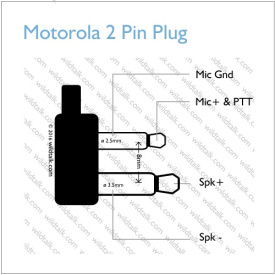Macbeth & Coriolanus
| Macbeth & Coriolanus
|
||
|---|---|---|
| Summary | ||
| Dates 7th -10th Feb 2023
| ||
| Performance Course Second Year BA Acting
| ||
| Location Chandler Studio Theatre
| ||
| Creative Team | ||
| Director | ||
| Designer | ||
| Sound Designer | ||
| Lighting Designer | ||
| Production Team | ||
| Stage Supervisor | ||
| Deputy Stage Supervisor | ||
| Stage Manager | ||
| Deputy Stage Manager | ||
| Book Cover | ||
| Assistant Stage Managers | ||
| PLX | ||
| LX Programmer/DPLX | ||
| Production Sound Engineer | ||
| Technical Stage Technicians | ||
| Lighting Technicians | ||
| Sound Technicians | ||
Overview
TSD
The main design for this show was a large 2D pattern Design made with PVC tape going up a false wall US.The Seating bank was Retracted and steel deck was brought in so the audience was on 3 sides.
Sound
Vectorworks Plan
Kit List
Coriolanus Sounds
Macbeth Sounds
Rehearsal Reverb Unit
During the rehearsal process Andy (Director) wanted two mics in the room with a reverb effect as this was critical to the banquet scene, witches scene and other moments.
I wanted to try something different and knew that venues had Yamaha SPX90 in stock so booked that out and now needed a mixer to control volume and reverb so borrowed Dave Evan's 2 channel soundcraft.
The signal flow in the room was;
SM58 > Soundcraft > Mix Out into SPX90 > SPX90 into Behringer rehearsal room rack > JBL rehearsal room speakers
Motorola Radio Practical
This practical was used early on in Coriolanus, the radio played a messengers line through it while being placed on the actors shoulder. I found the radio on the Oxfam website for £9.99, although it had two minijack's on it. One to receive signal and one to send. So, I chopped both off and soldered a new single minijack on, to make sure that it could only receive signal. This practical did have a higher than intended failure rate I think this was because of the fragility of the purchased minijack from CPC. We used the T-Bone IEM 75 as a receiver.
Here is how it looked;
Stage Management
Stage Mark-Up
Based on the design, we were aware from the start that the design would fall to Stage Management to get into the space. We discussed painting the design to limit the damage it would undergo from the show, but we realised that that would require at least double the tape and triple the time to do. Based on the the tests that we did, the floor was laid in white PVC LX Tape. Having done the mark up in two different rehearsal rooms, we knew how the design should fall within the space.
The biggest challenge we had was the difficulty in finding out center point in the room. The chandler is a wonky venue, and it turns out all departments who had already rigged had taken their centre from different points. Ultimately it took the team an hour to find the centre point for our floor. After that is took us 2 and a half hours to lay the mark up, working closely with Kirstin to ensure all the lines were straight. Having previously worked out all the points we needed helped us to go faster through the process that if we had needed to measure them all on the day.
Blood Staining
Throughout Macbeth, we had a lot of blood used, including the blood chandelier. While TSD created and operated the mechanism, the SM team chose which blood we would use to prevent staining both the performers and the stage. I did tests on Clear Dancefloor tape, white PVC LX tape and gaffa tape to try and work out which tape worked best.
I added blood to several samples of tape, and every 10 minutes I would clean one of the samples to see if they stained. After an hour, I left the final samples overnight.
This testing process proved that none of the tapes stained on the surface within an hour. White Gaffa tape, however, did stain on the edges from the second that the blood was added. While this woul have been the easiest tape to lay flat and straight, this then ruled it out straight away. When left overnight, all of the tapes started to get a slightly pink hugh to them. This proved that the floor would have to be cleaned straight after each performance.
The blood we used was Pigs Might Fly, as it also came out of costume the easiest, and off skin fast.
Bloody Hands
We also used Pigs Might Fly to bloody Macbeth and Lady Macbeth's hands when Duncan was murdered. To do this I had a contained with a little blood in and a sponge. I would stand in the Vestibule where they would exit, holding the door with a foot so they could hear what was happening on stage. Both of these were done within 30 seconds, so were fast turn arounds. After bloodying his hands, I would hand Macbeth daggers as he entered.
To prevent dripping, Lara painted the daggers with a combination of red paint and PVA glue to make them look as if they were covered in fresh blood. This effect worked really well as we were able to strip the paint off easily after the final performance.



